Introduction
Can Rabbits See Color: The world of colors is a fascinating aspect of visual perception, enriching our understanding of the environment around us. When it comes to the animal kingdom, different species perceive colors in unique ways, often influenced by their evolutionary history and ecological niche. One such intriguing creature is the rabbit, a small mammal that has long captured human fascination. But can rabbits see color, and if so, how do their eyes and brains interpret the spectrum of hues that paint the world? Exploring the visual capabilities of rabbits unveils a captivating blend of biology, behavior, and adaptation. In this exploration, we delve into the question of whether rabbits noise can perceive color, the nuances of their visual system, and the implications of their color vision on their daily lives. In the enchanting realm of the natural world, the diversity of sensory experiences among different species never fails to captivate curious minds. Among the countless inhabitants of this world, rabbits emerge as creatures of particular intrigue. With their endearing appearance and often elusive behavior, they have garnered attention and affection from humans for centuries.
As creatures of the daylight and the shadows, it’s only natural to wonder about the colors that grace their environment and whether these hues hold any significance in their lives. The inquiry into whether rabbits can perceive color delves into the intricate interplay between biology, evolution, and perception. Do their eyes unravel the rich tapestry of colors that adorn fields and forests, or do they experience a more muted version of the world? To answer these questions, we must journey into the world of rabbit vision, dissecting the nuances of their visual anatomy and deciphering how their brains decode the chromatic symphony that envelops them. As we peel back the layers of this enigma, we gain insights not only into the rabbits themselves but also into the fascinating ways in which nature crafts the senses of its myriad inhabitants. Join us on this exploration as we unveil the captivating tale of color perception in rabbits and the astonishing mechanisms that shape their sensory experiences.
This query delves into the very essence of a rabbit’s existence—its visual perception. Beyond the playfulness of their hops and the endearing twitch of their whiskers, lies a complex system of optics and neural connections that unravel the mystery of their color vision. The story of whether rabbits can discern the vibrant palette of the natural world or if they navigate a more subdued realm unveils the intricate tapestry of their evolution, biology, and ecological role. As we embark on this journey, we venture into the rabbit’s world, examining the fascinating interplay of their ocular structures and the biology of their retinas. We’ll uncover how their visual system has been honed by evolution to serve their specific needs, whether foraging for sustenance or evading predators. Through the lens of science, we’ll explore the broader implications of rabbit color vision, from understanding their behaviors to illuminating their place in the ecosystems they call home.
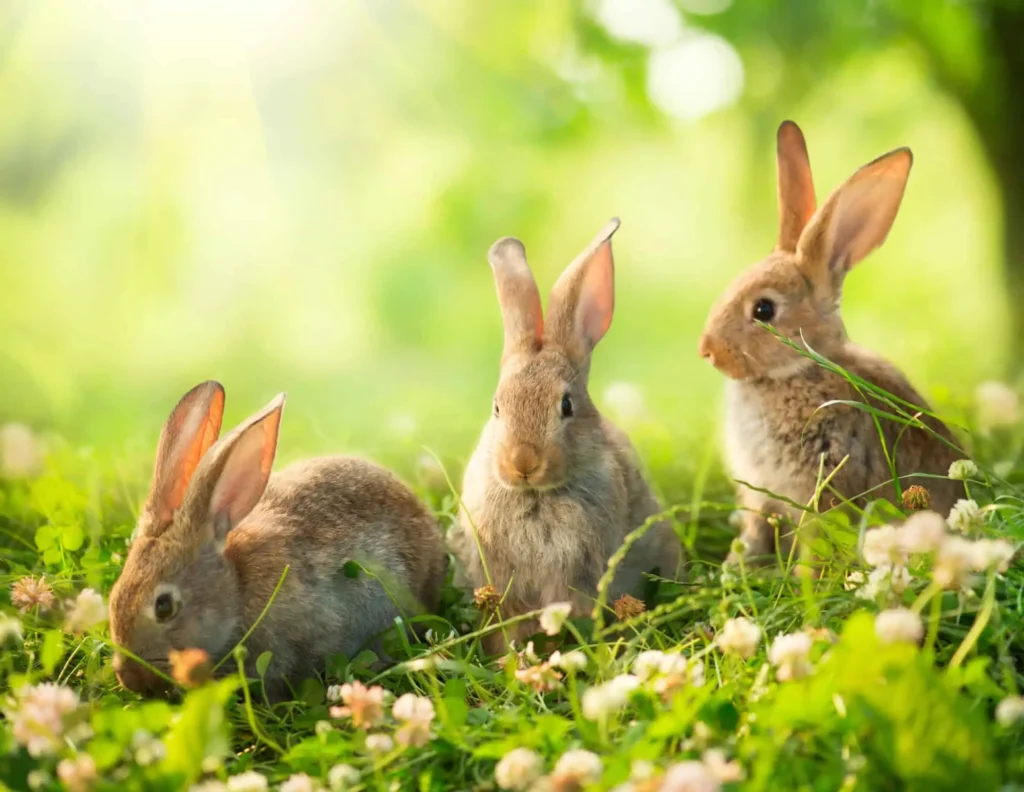
What color do rabbits see red as?
If a rabbit’s eye were compared to a human eye, we would say that the rabbit had protanopia — also known as color blindness. Essentially, they are unable to perceive red and green colors. Humans who have protanopia perceive red as black.
Rabbits, like many mammals, possess two types of photoreceptor cells in their retinas: cones and rods. Cones are responsible for color vision, while rods are more sensitive to low light conditions and aid in night vision. However, compared to humans, rabbits have fewer cones and more rods, indicating that their vision might be less focused on color discrimination and more geared towards detecting motion and contrast.
Rabbit color vision is believed to be dichromatic, meaning they perceive a limited range of colors compared to humans, who are trichromatic. Humans have three types of cones that allow us to see a wide spectrum of colors, including red, green, and blue. On the other hand, rabbits are thought to have only two types of cones, which likely correspond to blue and green wavelengths of light. This suggests that they might not perceive the color red in the same way humans do.
To rabbits, red might appear more muted or even indistinguishable from other colors, as their visual system is not optimized for detecting the longer wavelengths of light associated with red hues. Instead, their eyes are more attuned to shorter wavelengths, making them sensitive to blue and green colors. This adaptation is thought to be related to their natural habitat and evolutionary history as prey animals.
Can rabbits see in dark?
Rabbits can see in the dark. Because they are crepuscular – meaning that they are most awake and alert at dawn and dusk – rabbits have evolved to see very well in low-light conditions. This helps them to forage for fresh grasses and weeds, even while the sun is barely up.
One of the key adaptations that aids rabbits in low-light environments is the abundance of rod cells in their retinas. Rod cells are photoreceptors that are highly sensitive to low levels of light but do not perceive color. This makes them well-suited for detecting movement and changes in contrast, which are crucial for survival in dimly lit surroundings. These cells allow rabbits to detect the slightest motion of a potential predator or a nearby food source.
Moreover, rabbits’ eyes have another fascinating adaptation called the tapetum lucidum. This is a reflective layer located behind the retina, which serves to enhance the available light by reflecting it back through the retina. This boosts the chances of photoreceptor cells capturing more light and thus contributes to improved low-light vision. The tapetum lucidum is what gives the characteristic “eye shine” seen in many animals when light is shone directly into their eyes at night.
While rabbits have certain advantages in low-light conditions, it’s important to note that their vision might not be as sharp as in well-lit situations. Their eyes are adapted to prioritize detecting movement and changes in light rather than fine detail or color discrimination. This adaptation helps them survive and avoid predators during the hours when they are most active, which are typically at dawn and dusk.
What Colour do rabbits love?
Offering red carpets, cushions, or blankets to your rabbit allows them to seek out this vibrational energy whenever they need it. In my work with rabbits and other animals, it’s very evident that they love to lie on the red when they lack regular contact with the outdoors. In contrast to red, blue is cooling.
Rabbits have dichromatic color vision, meaning they likely perceive a limited range of colors compared to humans who have trichromatic vision. Their color vision is believed to be attuned to shorter wavelengths, making them more sensitive to blue and green colors. Reds and oranges might appear more muted to them due to the absence of specific cone cells that detect longer wavelengths of light.
When it comes to their interactions with colors, rabbits’ behaviors and responses can vary. They might be more attracted to colors that stand out against their natural environment. For example, a brightly colored toy or object might catch a rabbit’s attention and stimulate its curiosity. However, this attraction is not based on a preference for a particular color but rather on the novelty or contrast that the color provides.
It’s also important to consider that individual rabbits might react differently to colors based on their unique personalities, past experiences, and environmental factors. Some rabbits might be more curious and interested in exploring colorful objects, while others might be more reserved or indifferent.
Are bunnies intelligent?
Yes, it turns out that rabbits are very smart! Some breeds are even trainable. For example, you can teach a bunny to recognise their names and come to you when called. Rabbits also have a very good memory: they don’t forget negative experiences and emotions easily.
Problem-Solving Abilities: Rabbits can demonstrate problem-solving skills in various situations. For example, they can learn to navigate complex burrow systems, find food sources, and even figure out how to access areas with desirable hiding spots.
Social Dynamics: In the wild, rabbits are social animals that live in groups and establish hierarchies. This requires an understanding of social cues, body language, and communication. Domestic rabbits also display social behaviors and can form strong bonds with humans and other animals.
Memory: Rabbits have been shown to have good spatial memory, enabling them to remember the locations of food sources, safe hiding spots, and escape routes. This skill is essential for their survival and evasion of predators.
How good is rabbit eyesight?
Compared to humans, rabbits have more rods than cones in their retinas. This means rabbits can see better than we can in the dark but are limited to two-color vision. For example, they can distinguish between green and blue but cannot see red.
A Wide Field of View
One of the most remarkable features of rabbit eyesight is their expansive field of view. Rabbits are prey animals, and as such, they need to be vigilant of potential threats from all directions. Their eyes are positioned on the sides of their head, offering a nearly 360-degree field of vision. This panoramic view allows them to detect predators approaching from various angles, which is crucial for their survival.
Binocular Vision and Depth Perception
While their wide field of view is excellent for detecting threats, rabbits also possess a certain degree of binocular vision. The slight overlap in their visual fields provides them with binocular cues that allow them to perceive depth and distance accurately. This depth perception is important for judging the height of obstacles, gauging distances while hopping, and accurately assessing the proximity of predators or other animals.
Color Perception
Research suggests that rabbits have relatively good color vision, primarily focused on the blue and green portions of the spectrum. This ability to distinguish colors aids them in locating edible plants and identifying potential food sources. While they may not see the world as vibrantly as humans do, their color vision is still an essential aspect of their survival strategy.
Do rabbits have a blind spot?
Rabbit’s eyes are placed laterally so they have a good field of vision but struggle to see objects close up and have a blind spot right in front of their nose. For this reason, they have an acute sense of smell and remarkable hearing, with each ear being able to move independently.
Understanding the Blind Spot
A blind spot, in simple terms, is an area in an animal’s visual field where they lack the ability to see clearly due to the positioning of their eyes and the structure of their retinas. This occurs because the brain uses information from both eyes to construct a complete and coherent visual perception of the world. However, there is a specific region where the fields of vision of both eyes do not overlap, leading to a gap in their perception.
Rabbits, like many prey animals, have eyes that are positioned on the sides of their heads, providing them with a wide field of view to detect predators from various angles. This positioning, while advantageous for surveillance, creates a small blind spot directly in front of their nose and extending a short distance in front of them. Anything located in this blind spot might not be seen as clearly as objects in other parts of their visual field.
Adapting to the Blind Spot
To compensate for their blind spot, rabbits have evolved various strategies. One of the most important adaptations is their acute awareness of motion. Rabbits are incredibly attuned to movement, thanks to their peripheral vision and their ability to detect even subtle changes in their surroundings. This heightened sensitivity to motion is a key survival mechanism, helping them quickly spot potential threats or changes in their environment.
Additionally, rabbits are skilled at using their other senses, particularly their sense of hearing and smell, to complement their vision. When they are in close proximity to an object in their blind spot, they often rely on these other senses to gather information about their surroundings and potential dangers.
Do rabbits have a good memory?
Rabbits have very good memories. They possess what I call orientation memory. Our first rabbit had been in the house only a couple days when we began to feel sorry for her because we kept her in a cage.
Short-term Memory
Rabbits are known for their short-term memory, which plays a significant role in their daily activities. From foraging for food to eluding predators, this aspect of memory helps them keep track of their environment and make quick decisions. For example, if a rabbit encounters a threat, it needs to remember the location of hiding spots and escape routes in its immediate surroundings.
Experiments have shown that rabbits possess the ability to remember the locations of food sources and shelter for a short period of time. This adaptive skill aids them in efficiently gathering resources and surviving in the wild. Short-term memory enables rabbits to remember where they found food, allowing them to revisit those locations when needed.
Long-term Memory
Beyond short-term memory, rabbits have demonstrated the capacity for long-term memory as well. They can remember experiences and associations over extended periods, which has implications for learning and behavior. For instance, if a rabbit has encountered a specific predator or experienced a certain danger in the past, it can remember that experience and modify its behavior accordingly in similar situations.
A particularly intriguing aspect of rabbit memory is their ability to recognize individuals and form social bonds. This suggests that they possess memory mechanisms that enable them to remember the scent and characteristics of other rabbits, helping them navigate complex social dynamics within their communities.
Do rabbits ever sleep?
Rabbits are nocturnal animals, which means they sleep most of the time during the day and are active at night. Their lifestyle can be a little confusing for rabbit owners, as they may seem to sleep much more than other pets. But in reality, rabbits need it to rest and prepare for a night of activity.
Safety in Partial Sleep
Rabbits have evolved a fascinating adaptation called unihemispheric slow-wave sleep (USWS). This means that they can sleep with one half of their brain while the other half remains awake and vigilant. This is a survival mechanism that allows them to stay alert to potential threats while still getting some rest. The ability to keep one eye open, so to speak, ensures that they can respond quickly to any signs of danger.
When rabbits enter deeper stages of sleep, both halves of their brain are involved, but they tend to wake up frequently to check their surroundings. This behavior is a testament to their prey status and their need to stay attuned to their environment at all times.
Safe Havens for Sleep
Rabbits are known to choose their sleeping spots carefully. They prefer secluded, sheltered areas where they can feel safe from predators. Burrows, bushes, dense vegetation, and hidden crevices offer them the security they need to relax and sleep without being overly vulnerable.
Domesticated rabbits also exhibit similar behaviors. If you’ve ever noticed your pet rabbit resting or napping, you might have observed how they tuck themselves into cozy corners or under furniture. Creating a safe and comfortable environment is essential for their well-being, whether in the wild or in a home setting.
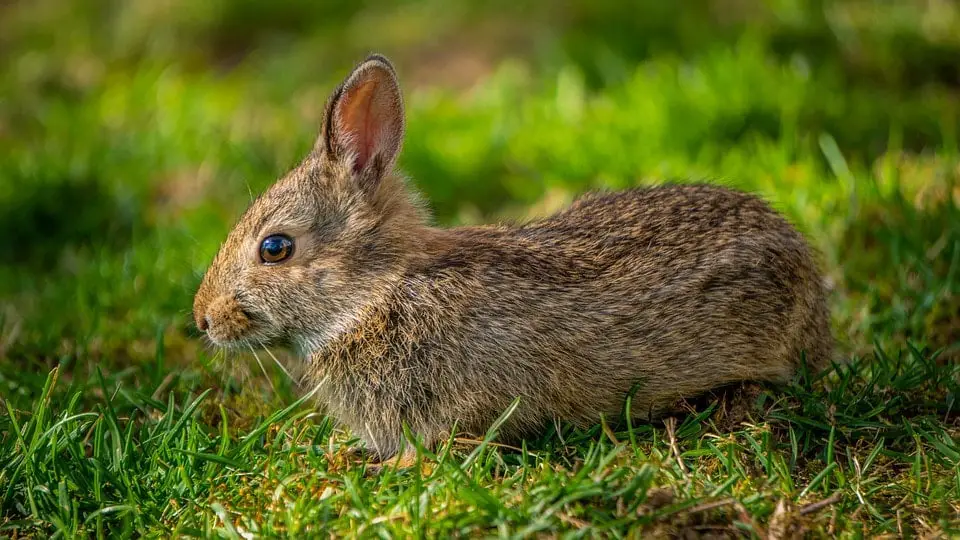
Conclusion
In the enchanting tapestry of the natural world, the question of how various creatures perceive their surroundings adds a layer of intrigue and complexity to the study of animal behavior. Among these curious beings, rabbits hop into the spotlight, capturing attention with their charm and elusive habits. As creatures of both day and twilight, their interactions with the world are as much about survival as they are about exploration. At the heart of this interaction lies a fundamental query: Can rabbits see color? Color perception is a captivating avenue into the sensory realm of these furry inhabitants. Their unique perspective on the world, painted through their visual senses, offers insights not only into their biology but also into the evolutionary journey that has shaped their existence. Through the lens of rabbit color vision, we delve into the intricate convergence of their anatomy, physiology, and the perceptual world they inhabit.
This exploration takes us beyond the surface to unveil the complexities of rabbits see retinas, the role of specialized cells, and the interplay between biology and behavior. By understanding how rabbits perceive color, we gain a glimpse into their adaptive strategies, whether seeking sustenance or evading predators. Join us as we embark on a journey through the eyes of these endearing creatures, uncovering the captivating story of how rabbits navigate the vibrant palette of their environment and, in turn, enrich our understanding of the remarkable diversity of life on Earth. The exploration of color perception in rabbits transports us into the realm of visual cognition, where the convergence of biology and behavior unfolds. Their ability—or lack thereof—to discern the spectrum of colors that paint their environment unveils layers of insight into their evolutionary history and ecological roles.
Behind their inquisitive eyes lies a captivating narrative of ocular structures, retinal cells, and neural pathways, intricately designed to decode the visual world around them. As we embark on this exploration, we unravel the mysteries of rabbit vision, piecing together the science behind their color perception and the ways it shapes their interactions with food, mates, and threats. Through this journey, we delve into the intricate dance between genetics and environment, uncovering how these small, unassuming creatures have adapted to thrive in diverse landscapes. So, join us as we peer into the kaleidoscopic world of rabbit color vision—a world where biology weaves the threads of perception, and where the question of whether rabbits perceive colors becomes a gateway to understanding the nuances of their existence in the natural tapestry of life.

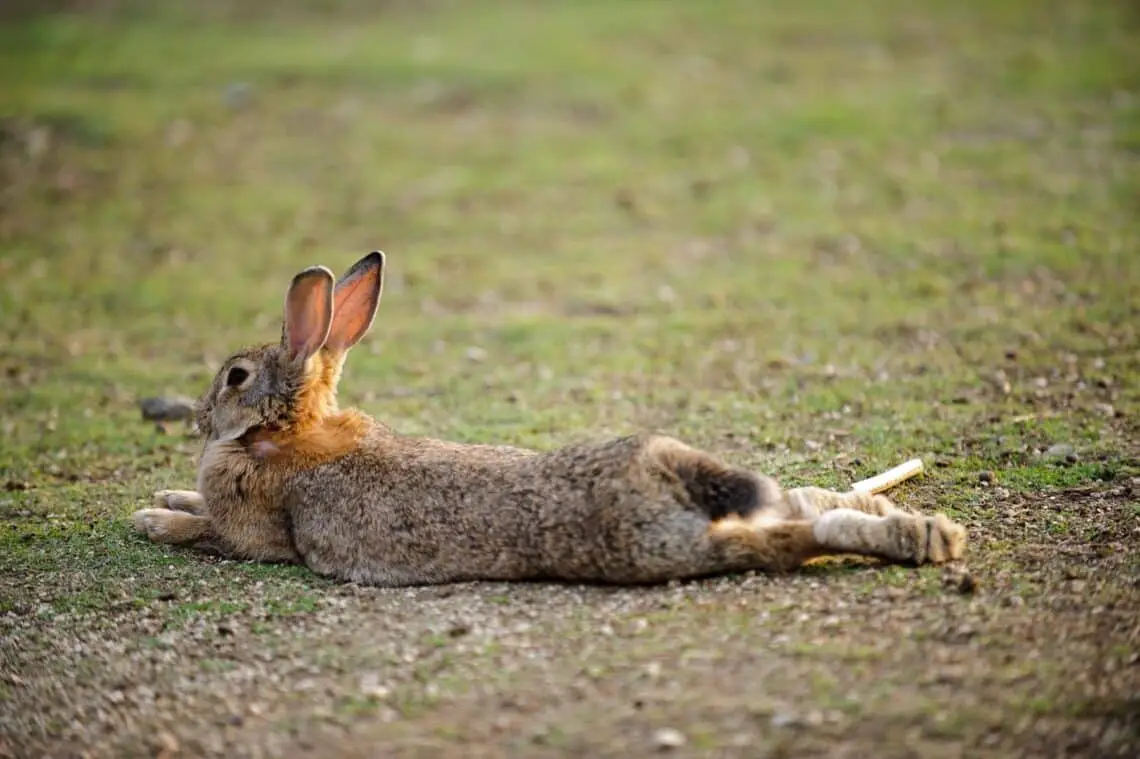
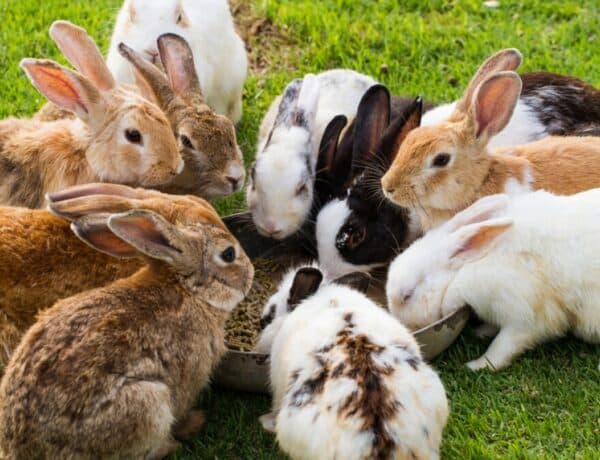
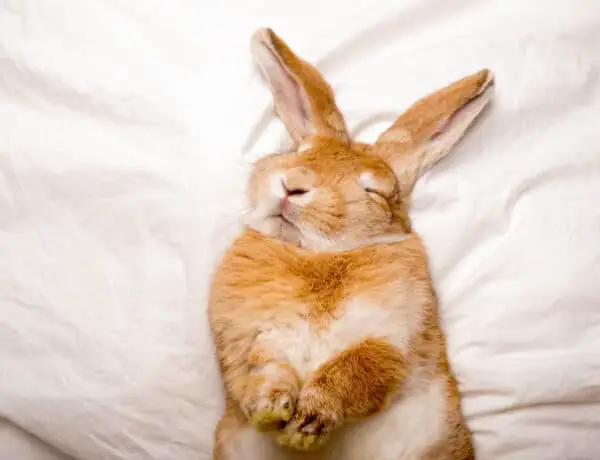
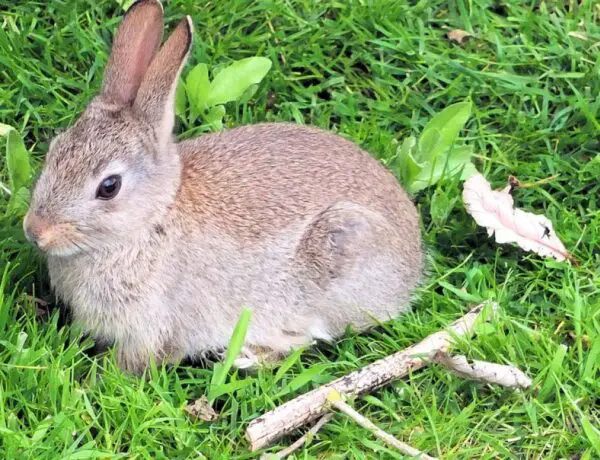
No Comments